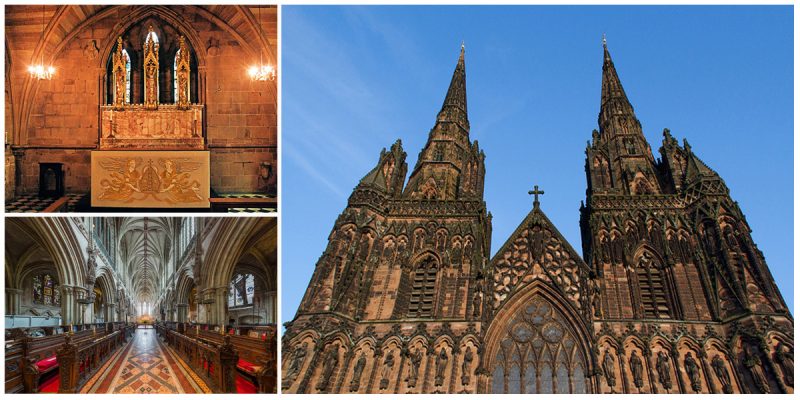The history of the Lichfield cathedral begins in the 7th century as it was dedicated to Bishop Chad and Saint Mary.
Situated in Lichfield, Staffordshire, the cathedral is the only medieval cathedral in England with three spires. Chad moved the focus of his diocese from Repton to Lichfield when he became Bishop of Mercia in 669.
The present site of the Cathedral was built in 700 AD, almost 30 years after the Bishop’s death when Bishop Hedda built a new church to house the Bishop’s bones.
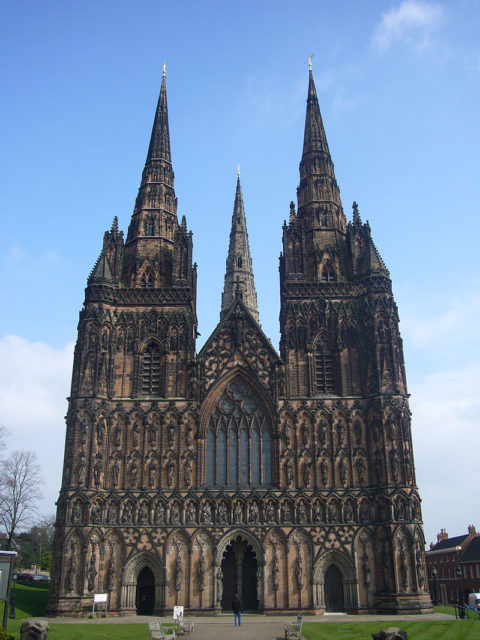
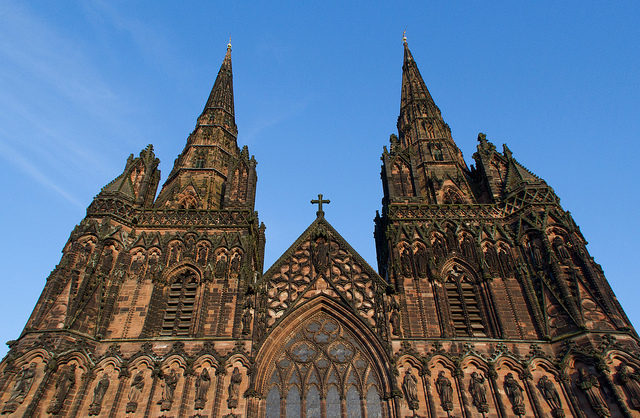
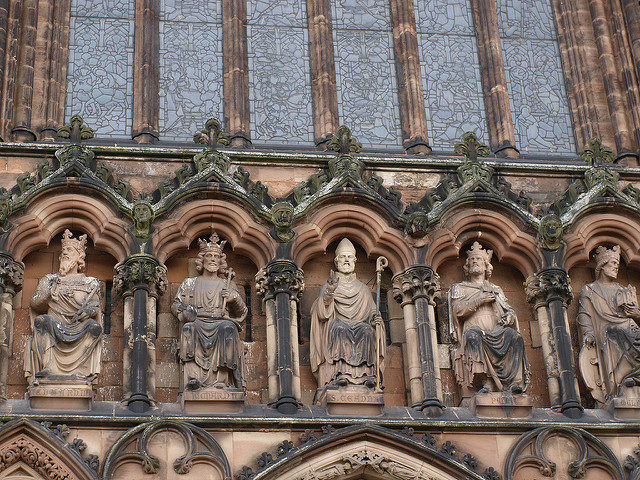
Bishop Chad was a miracle worker who converted many to Christianity and after his death, many pilgrims began to come to his shrine to express praise. During the 11th century, the wooden Saxon church was replaced by a Norman cathedral made from stone, and few pieces from this astonishing stonework are still visible in Consistory Court. Later, this Norman style was replaced with the present Gothic cathedral which was completed in the 1330s with the building of the Lady Chapel.
One of the most significant parts of the cathedral built in 1249 is the octagonal Chapter House which houses an exhibition of the Lichfield Gospels, an illuminated manuscript from the 8th century which is the most valuable treasure of the cathedral. The manuscript contains the Gospels of Matthew and Mark and part of the Gospel of Luke and it’s on display from Easter to Christmas.
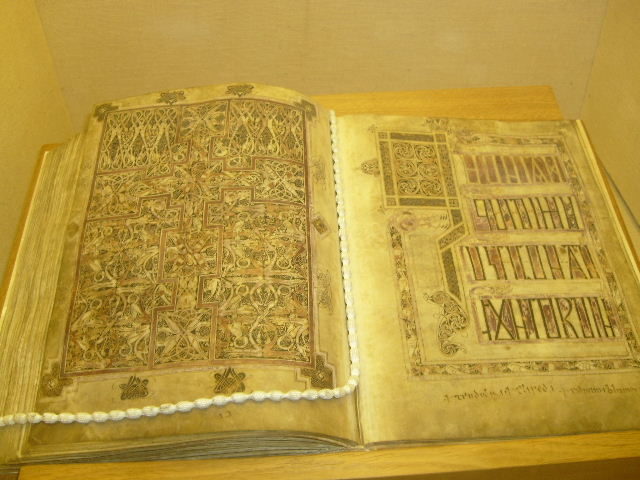
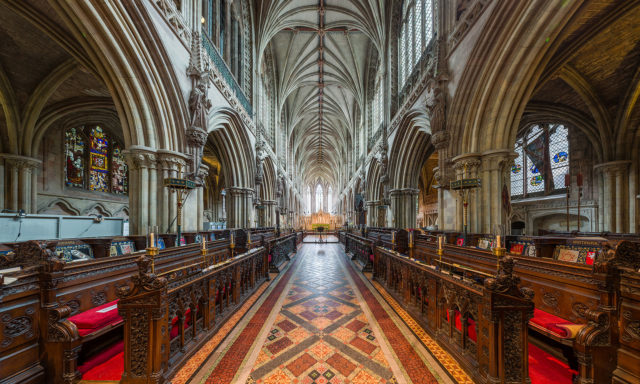
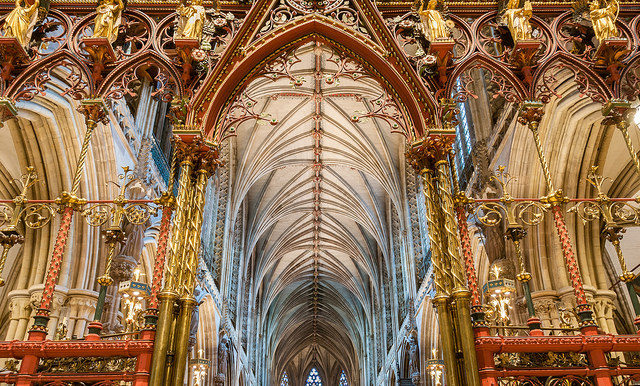
The cathedral has suffered many times through its history. During the Civil War in the 1640s, the Cathedral’s destruction was intense because it was at the center of the worst fighting of the war. The cathedral was under siege three times and was surrounded by a ditch and defensive walls which housed soldiers and horses.
In the 1660s, it was restored under Charles II and in the Victorian era, the interior was completely restored to its medieval beauty by Sir George Gilbert Scott. He added new imitations to the original pieces which were not available. There are many carvings of saints, queens, and kings, made with the original medieval materials.
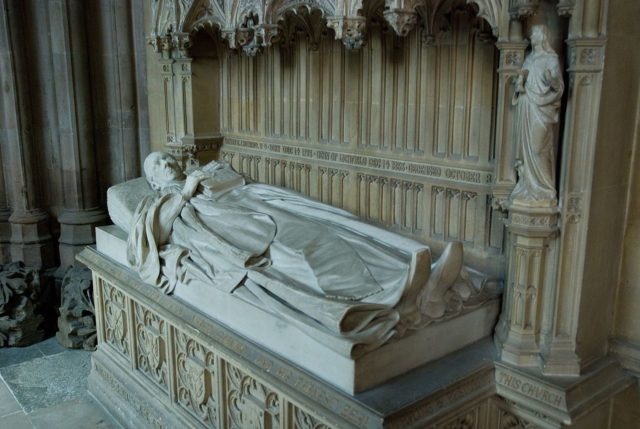
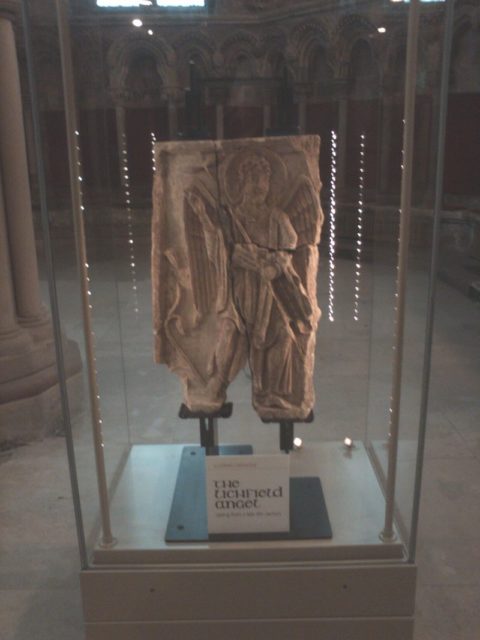
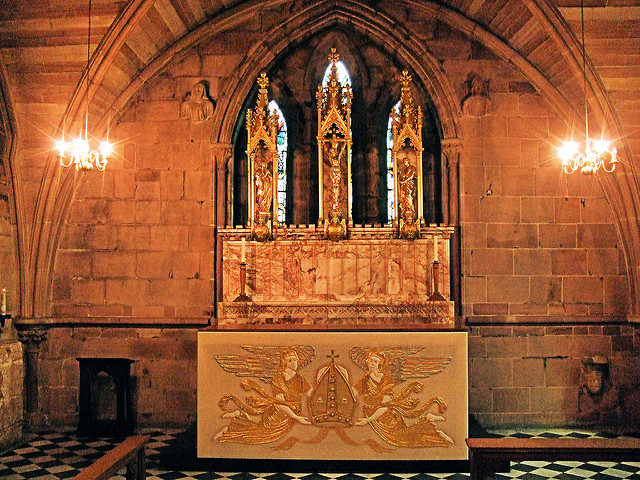
A sculpted panel of the Archangel Gabriel dating to the 8th century was discovered under the nave of the cathedral in February 2003. Originally part of a stone chest, the 600 mm panel is thought to have contained the relics of Bishop Chad.
It was unveiled to the public in 2006 and today is exhibited in the cathedral. The cathedral has a lot of tombs and memorials including Samuel Johnson Memorial, St Chad’s Head Chapel, John Stanley Memorial, Bishop de Langton effigy, Bishop Hackett effigy and much more. It is a well-known tourist location because of its remarkable medieval architecture and rich history.
